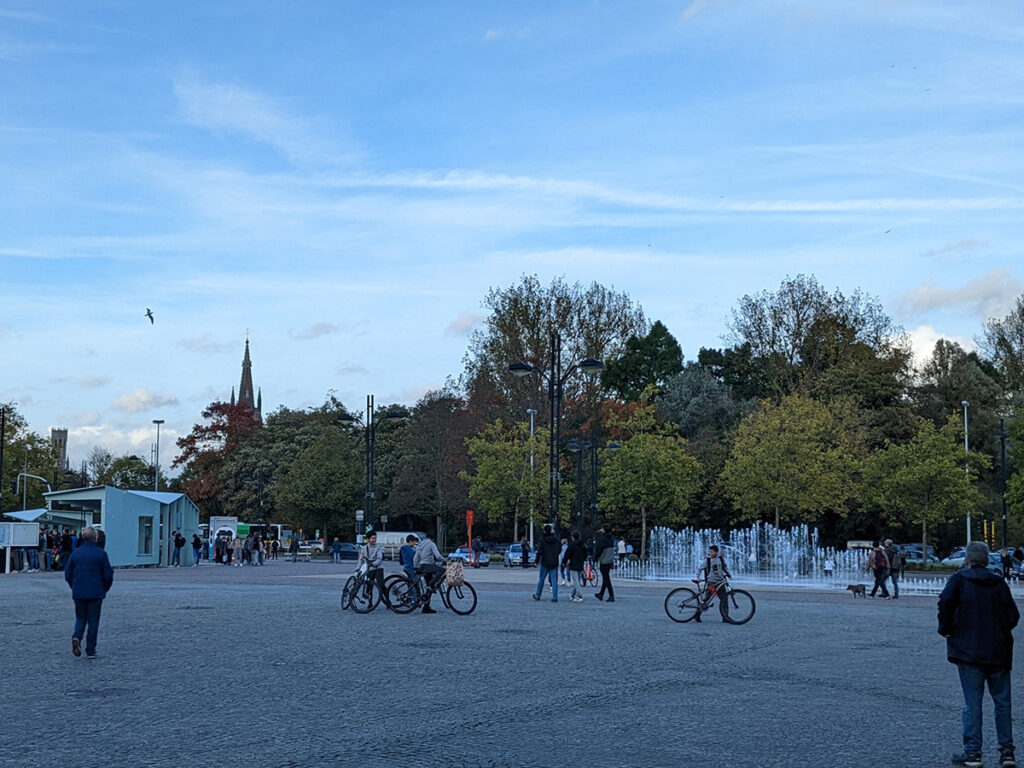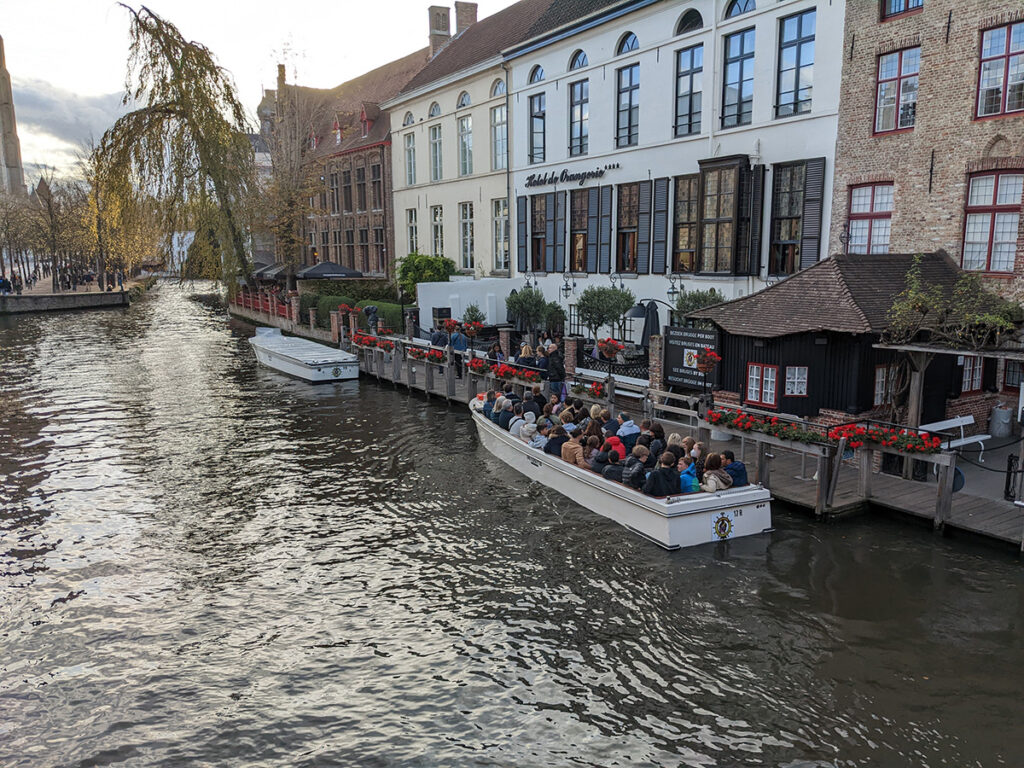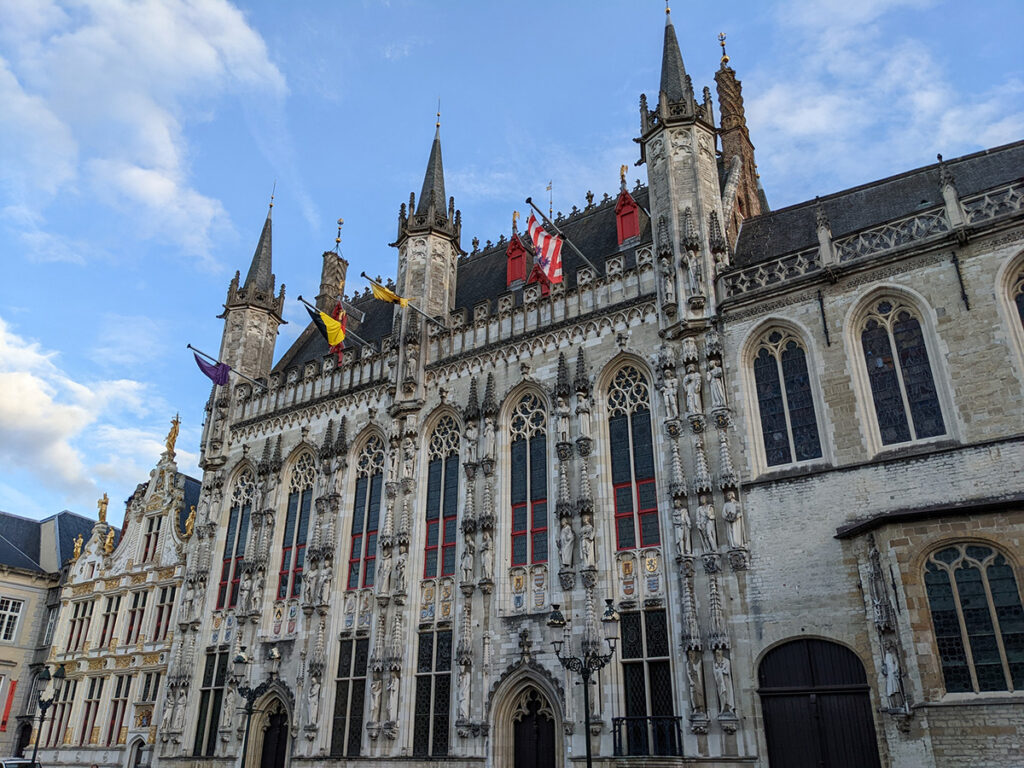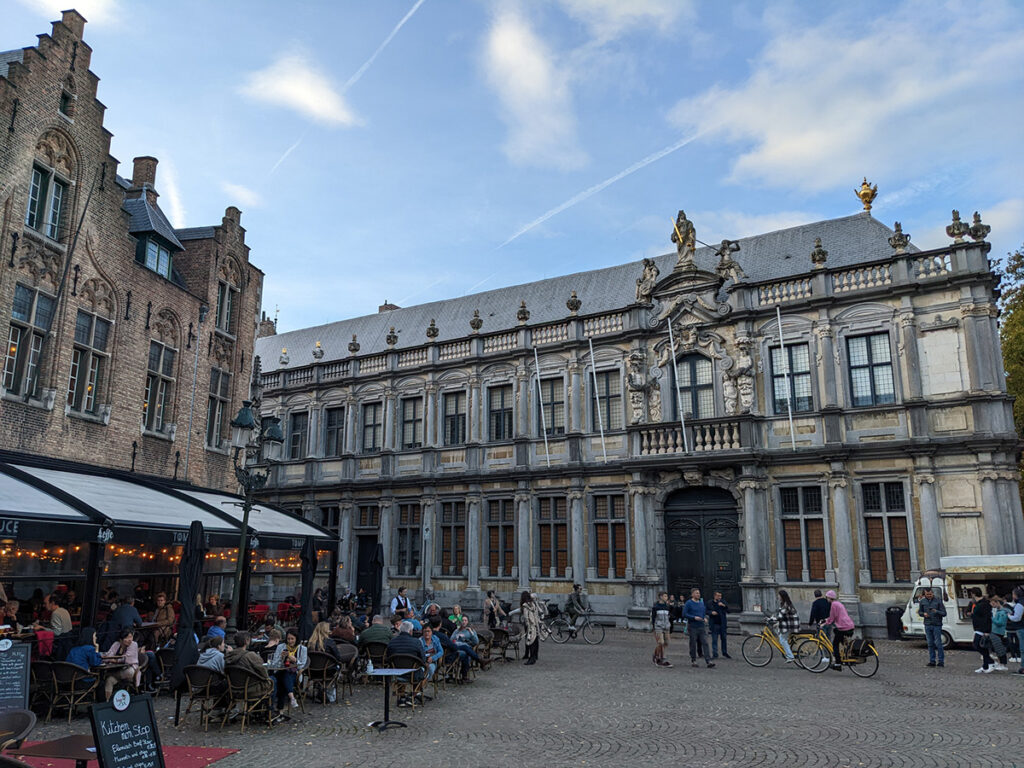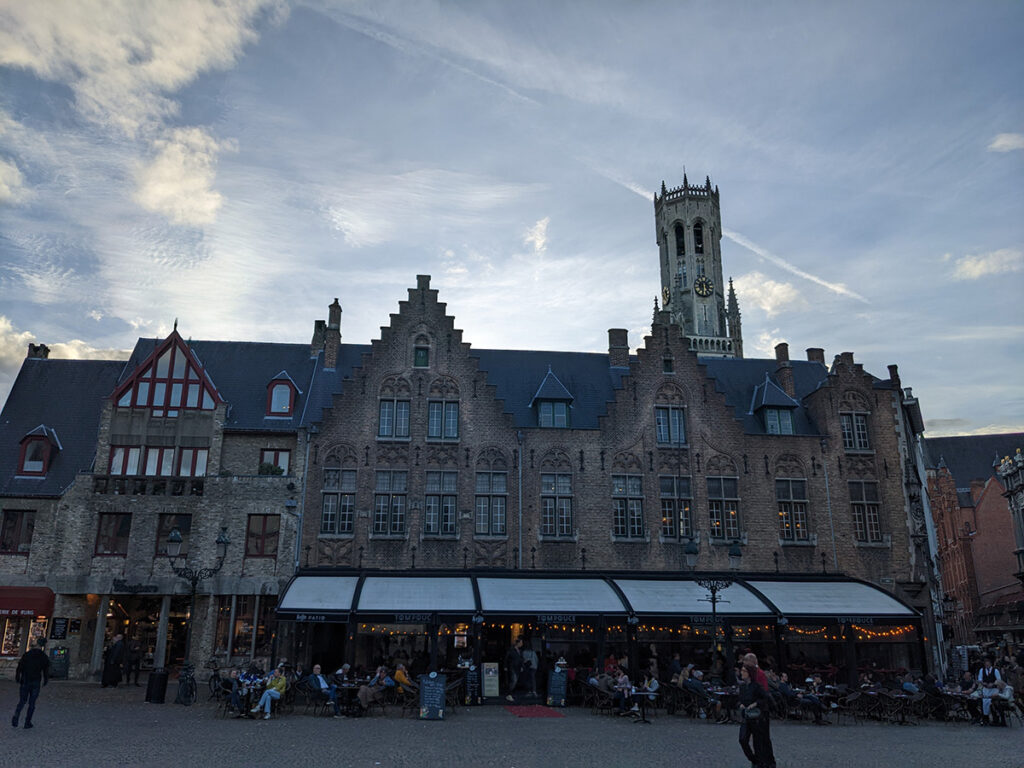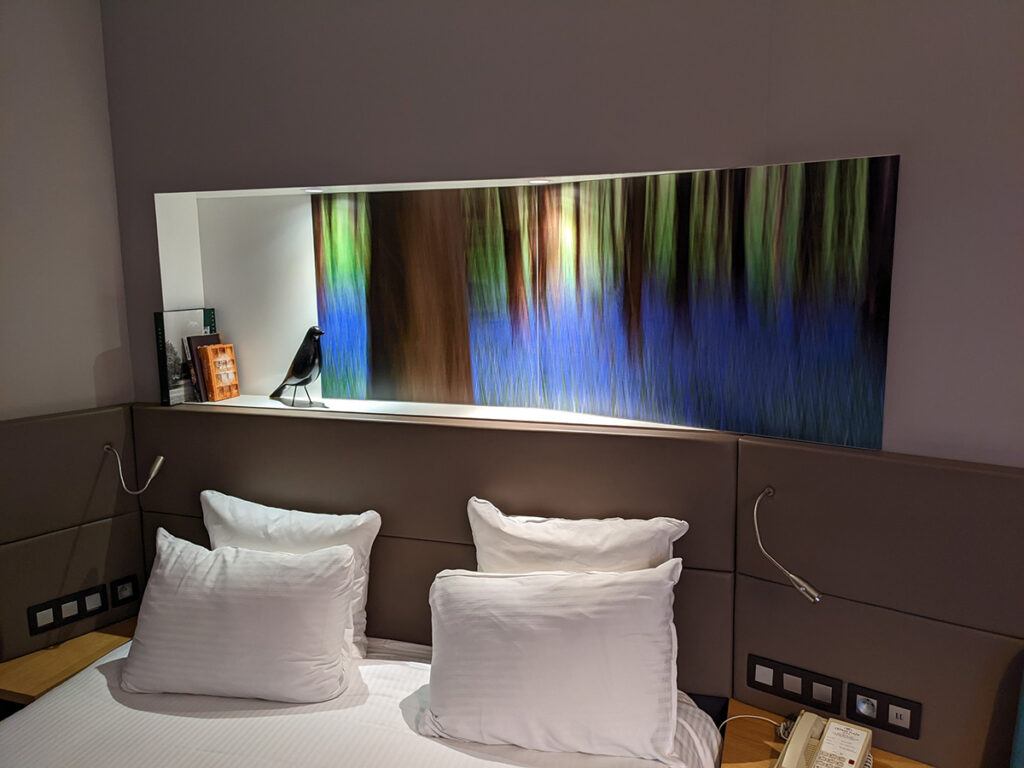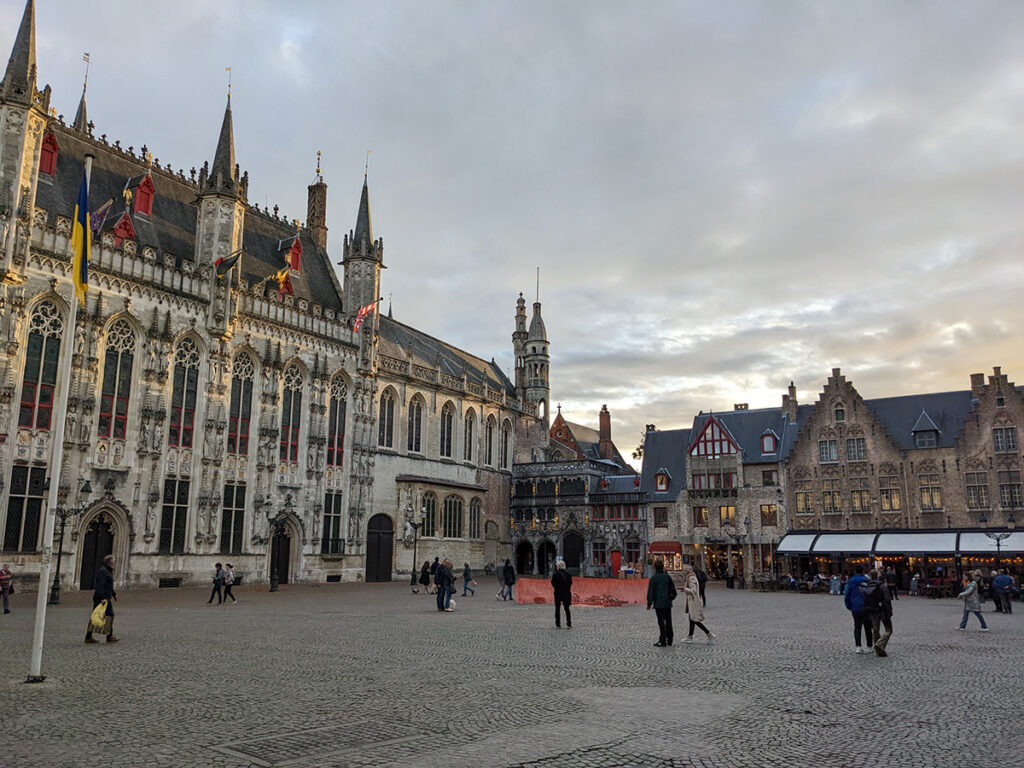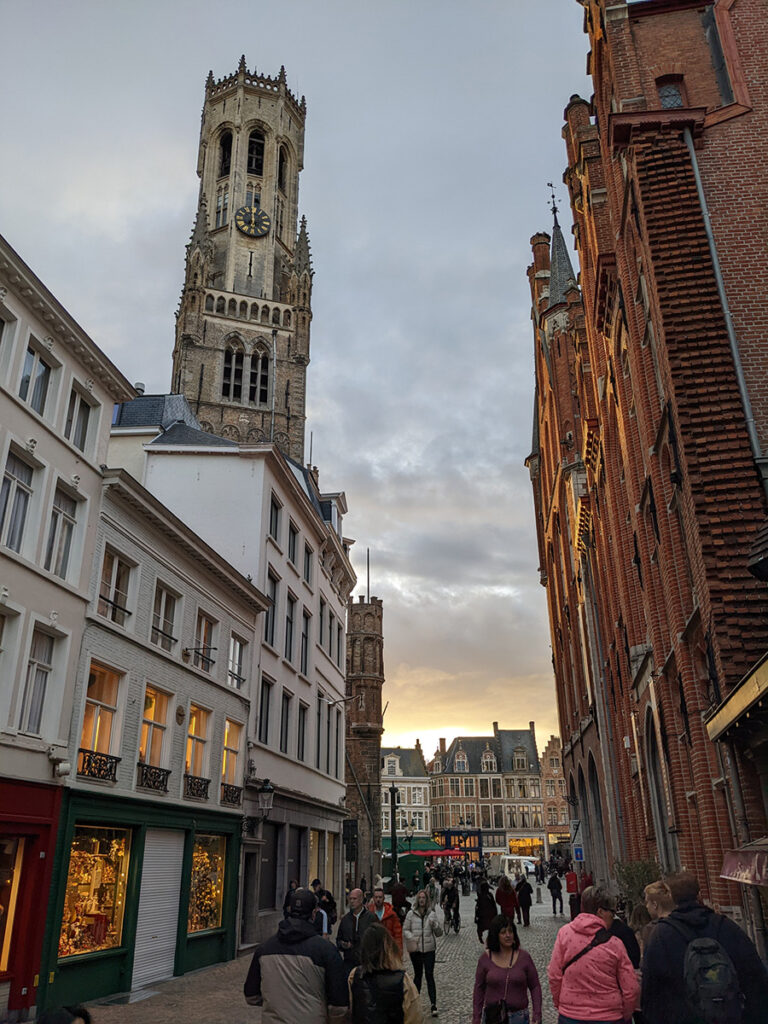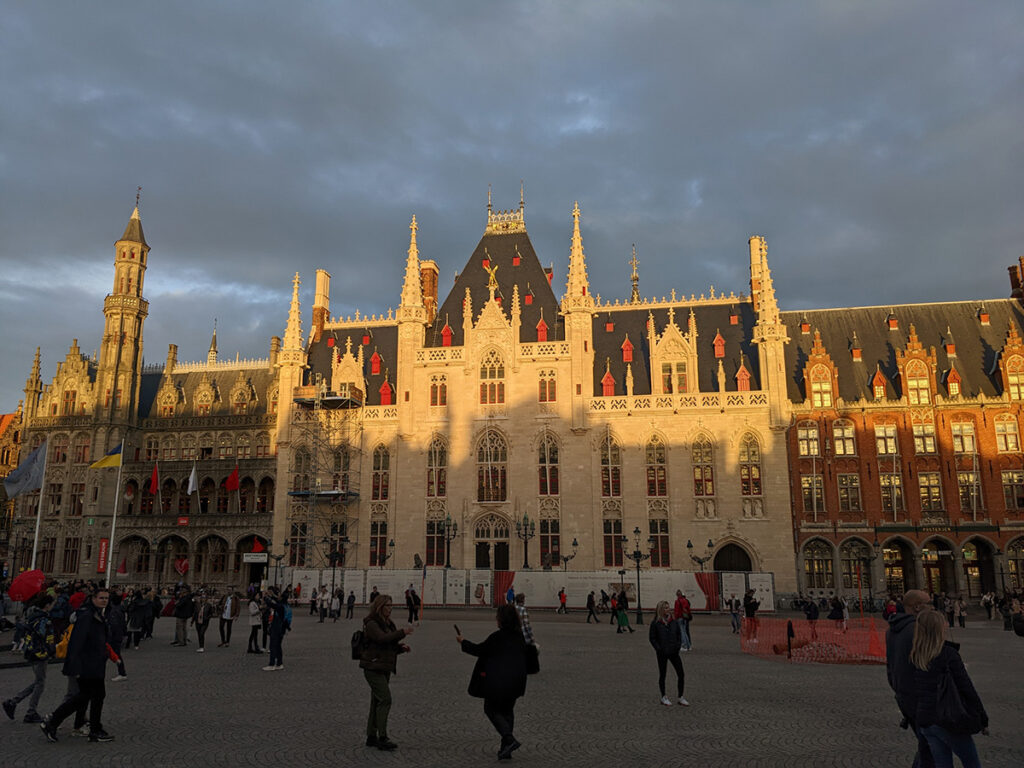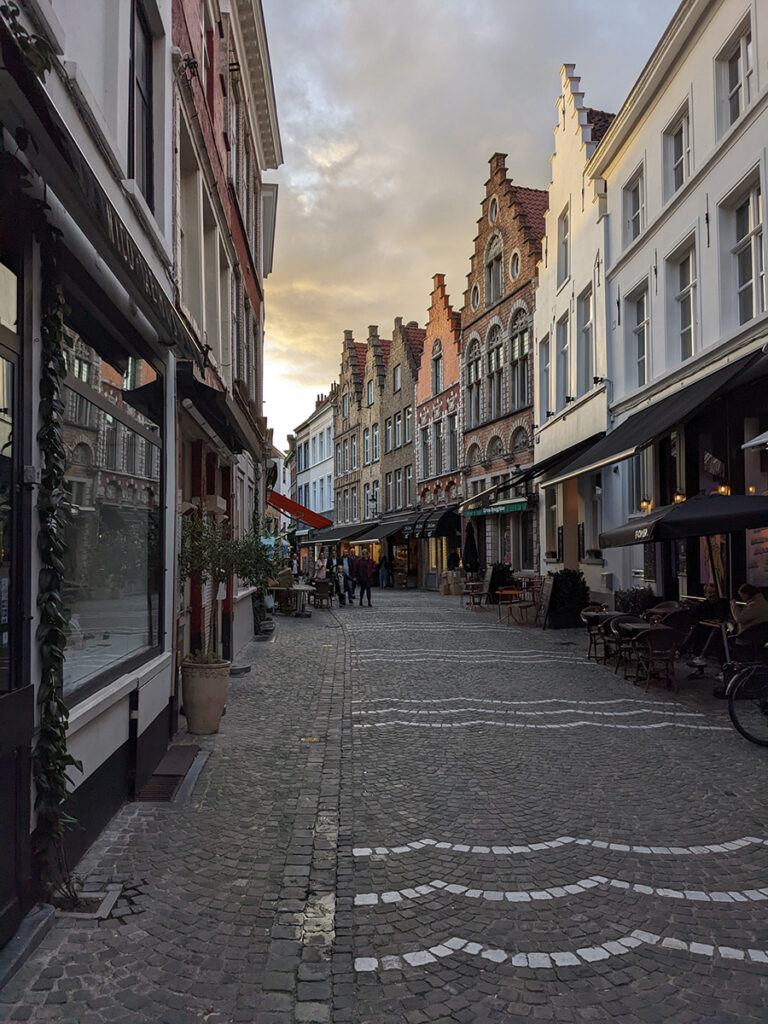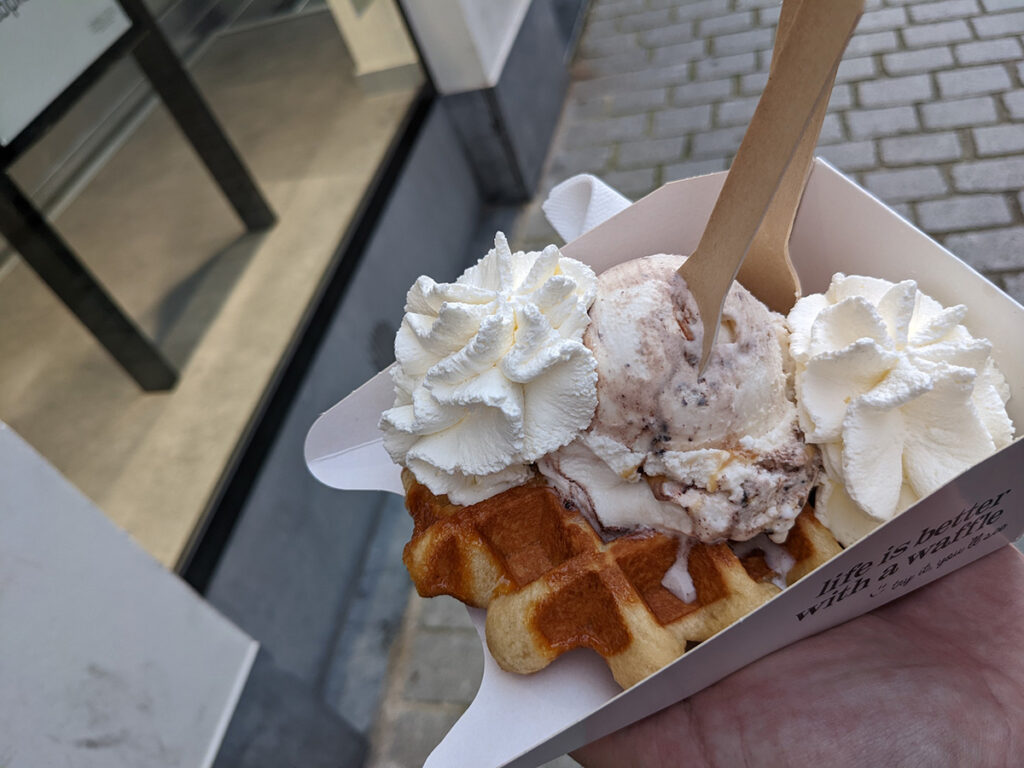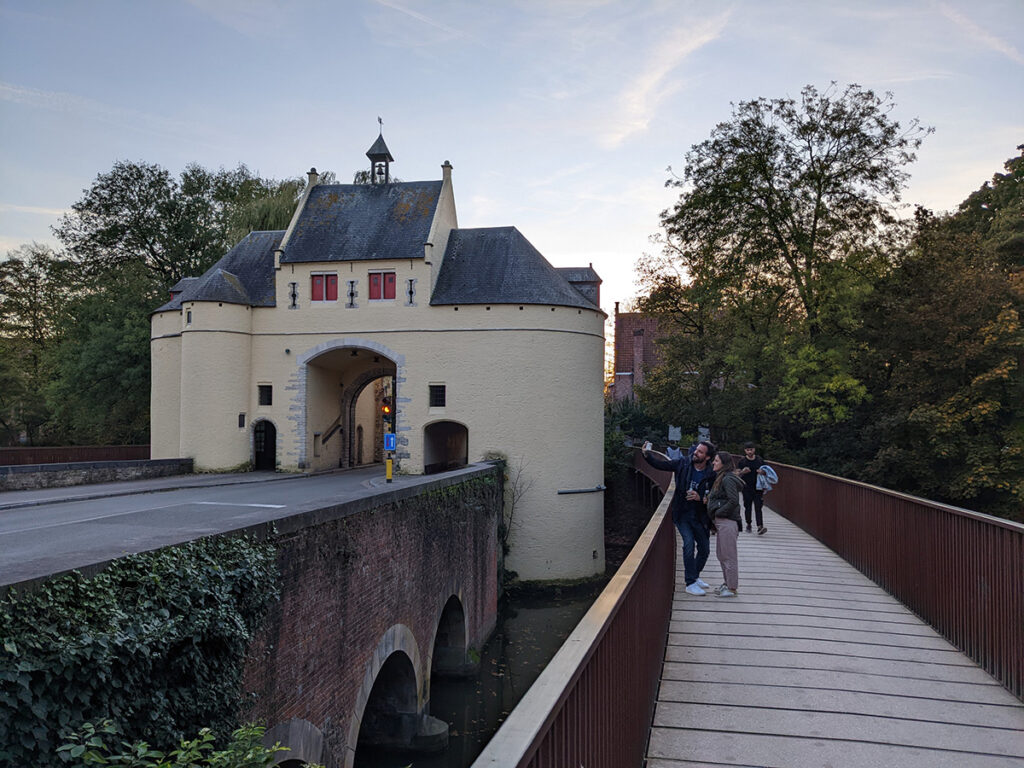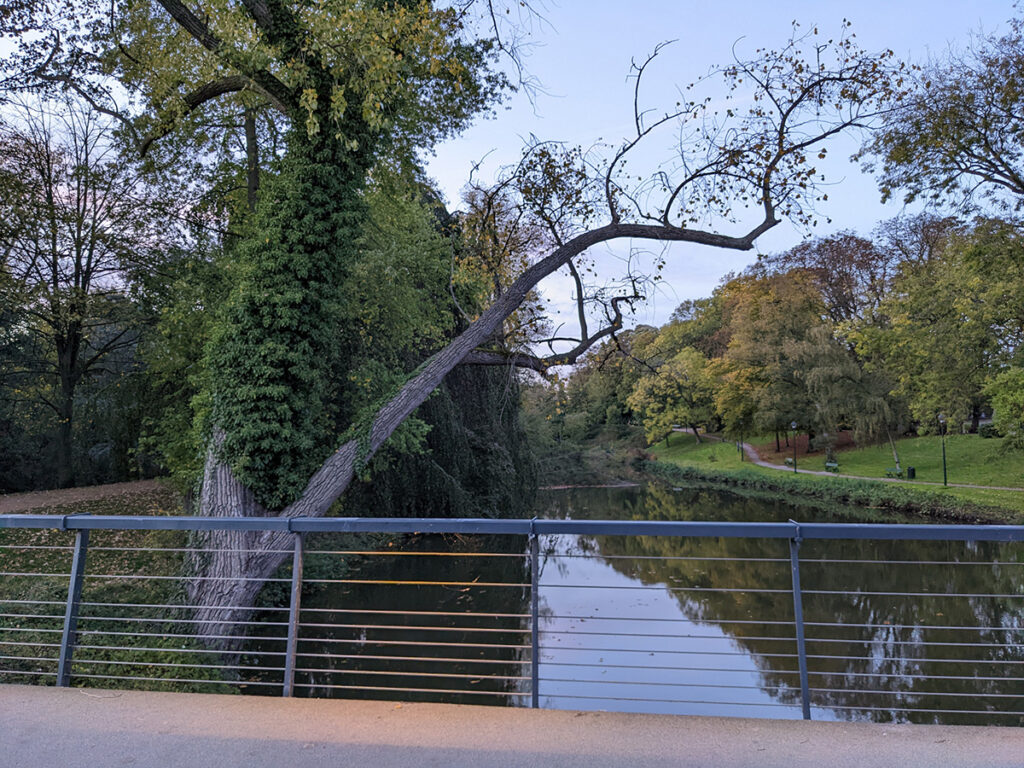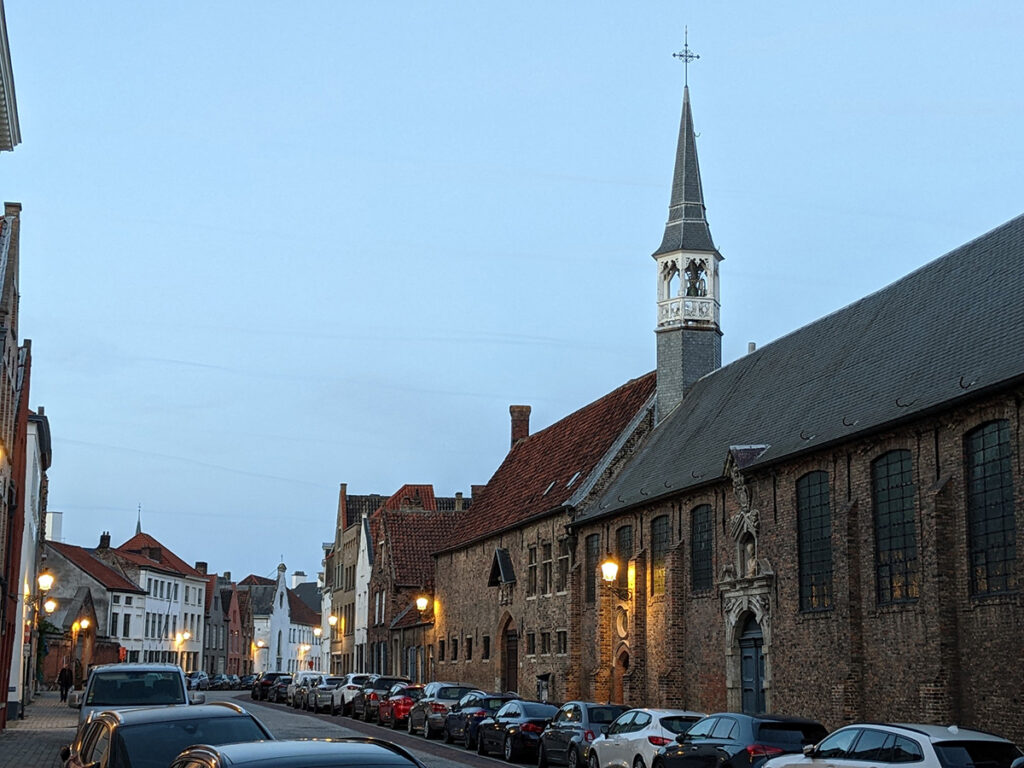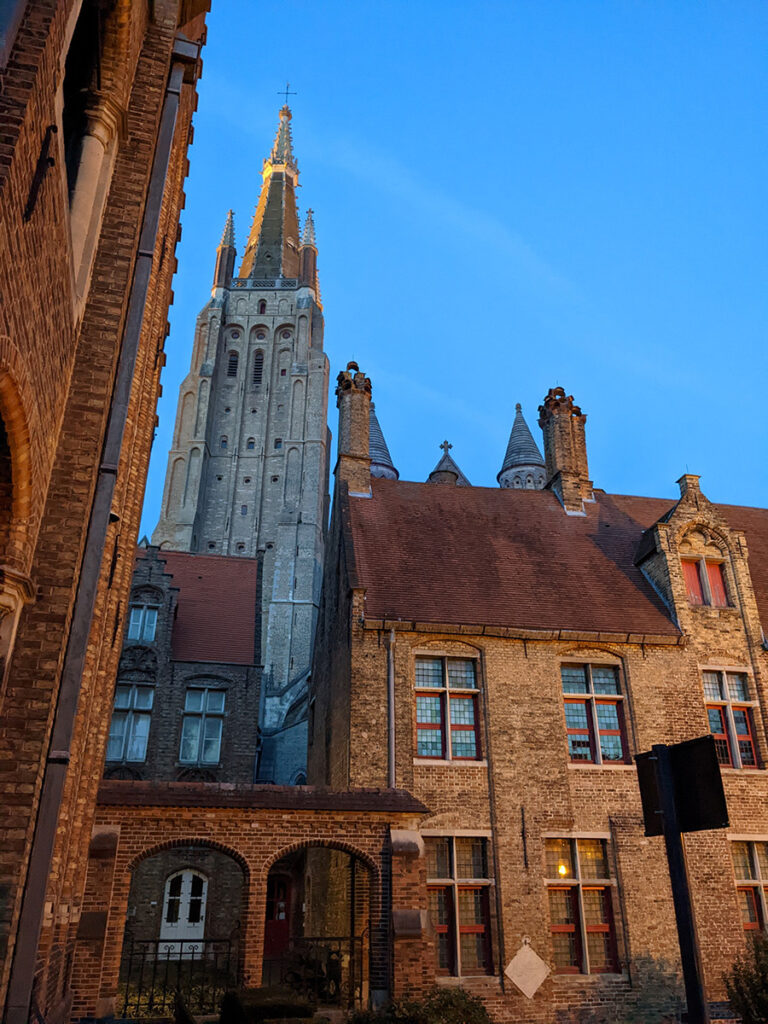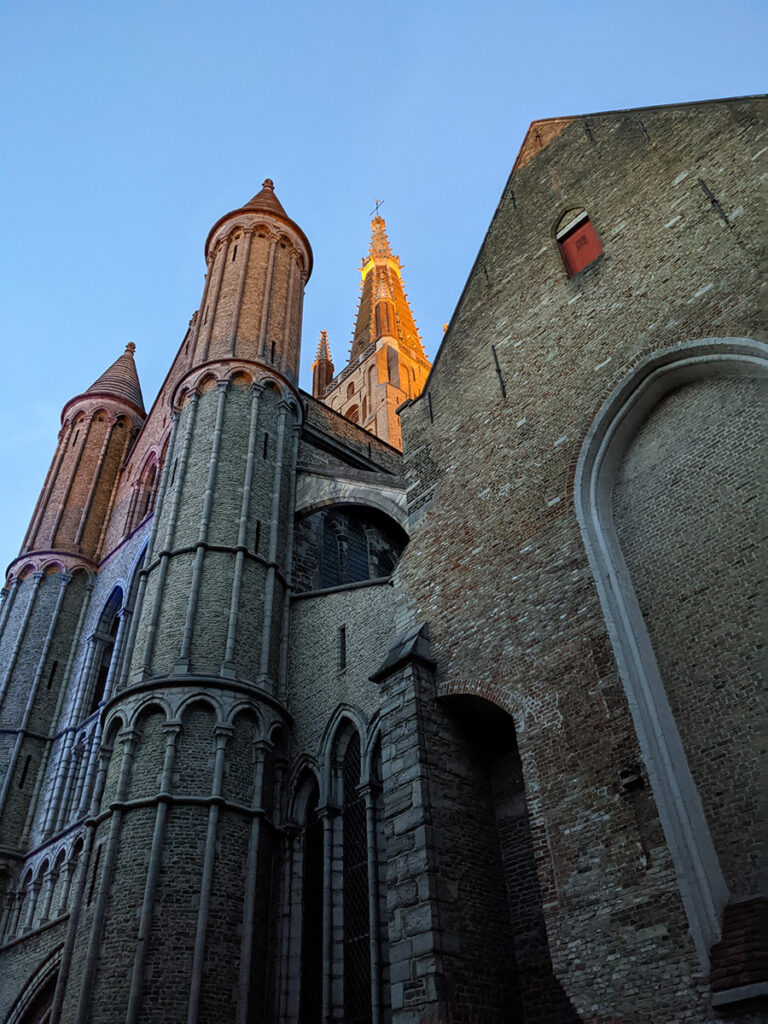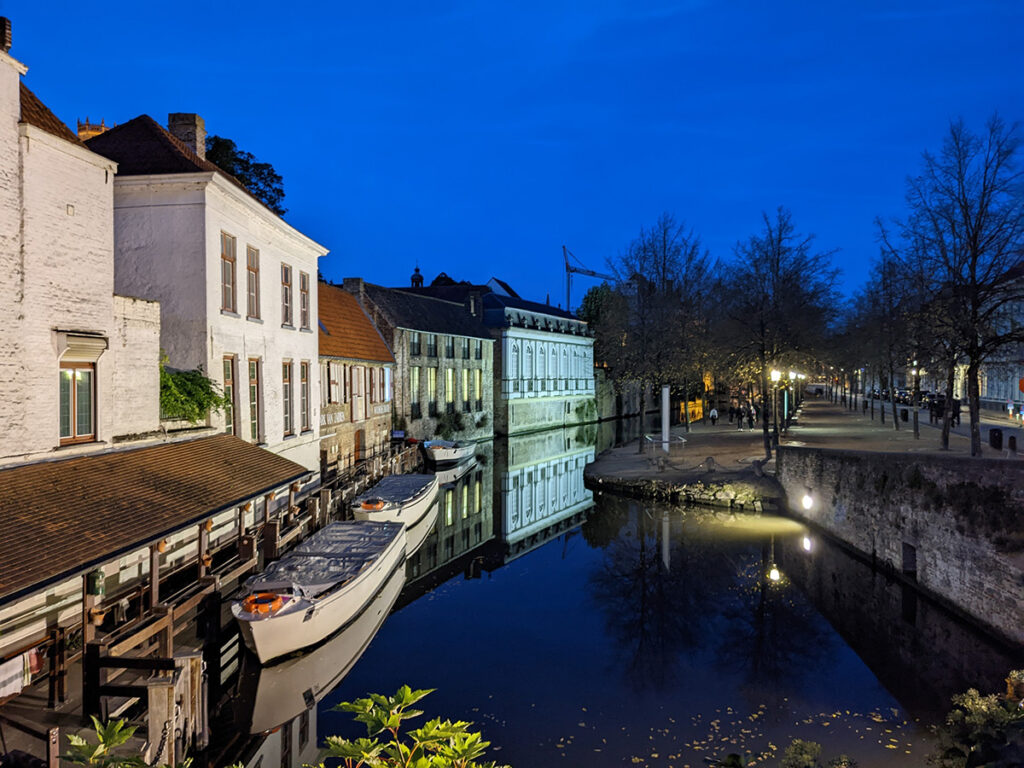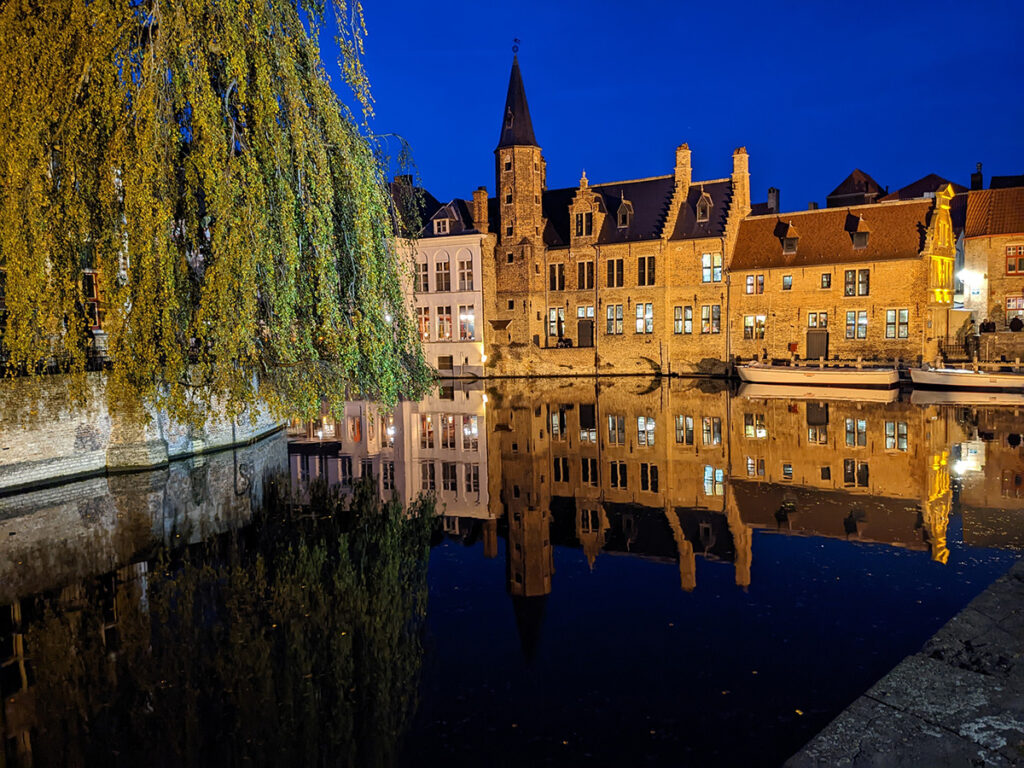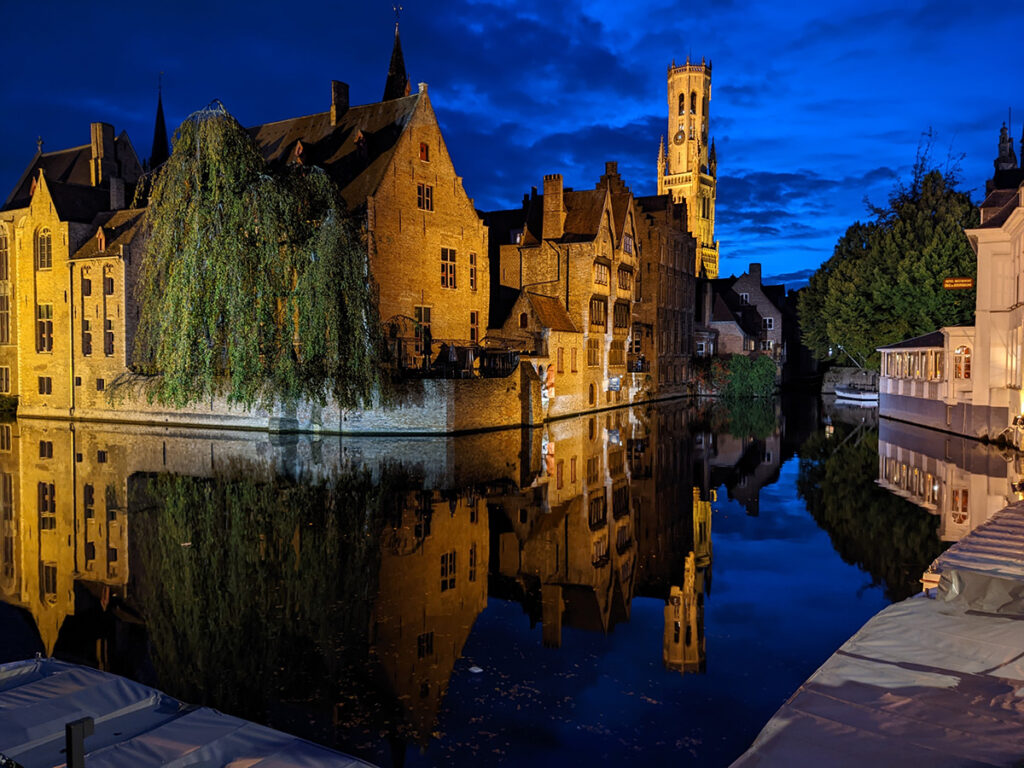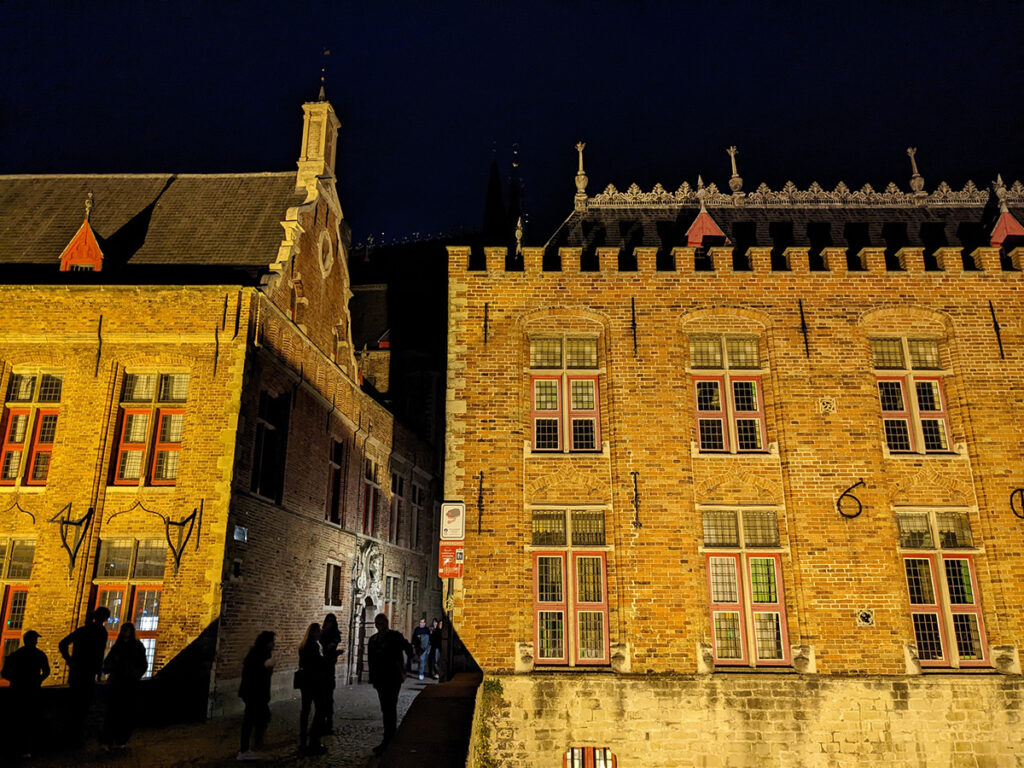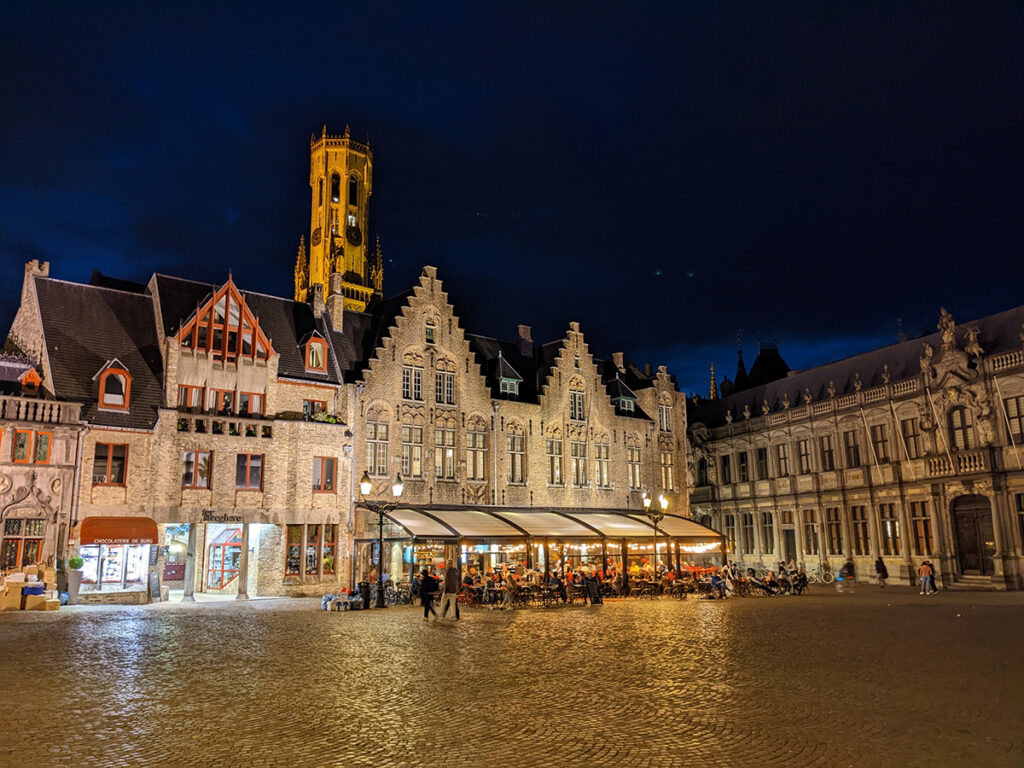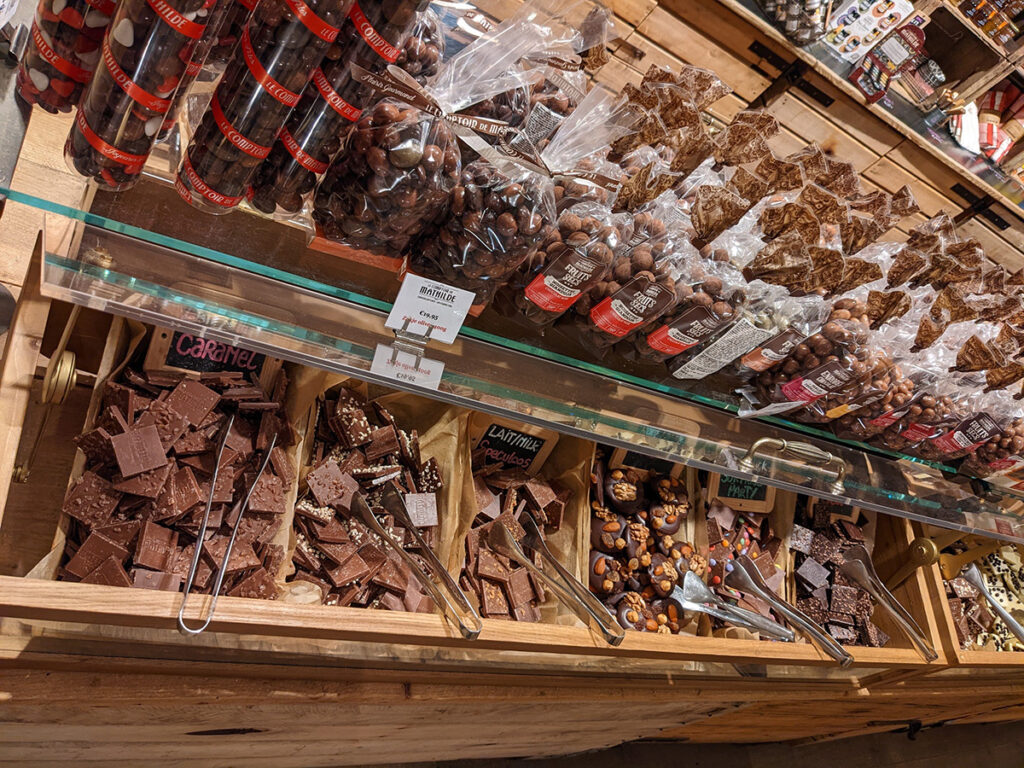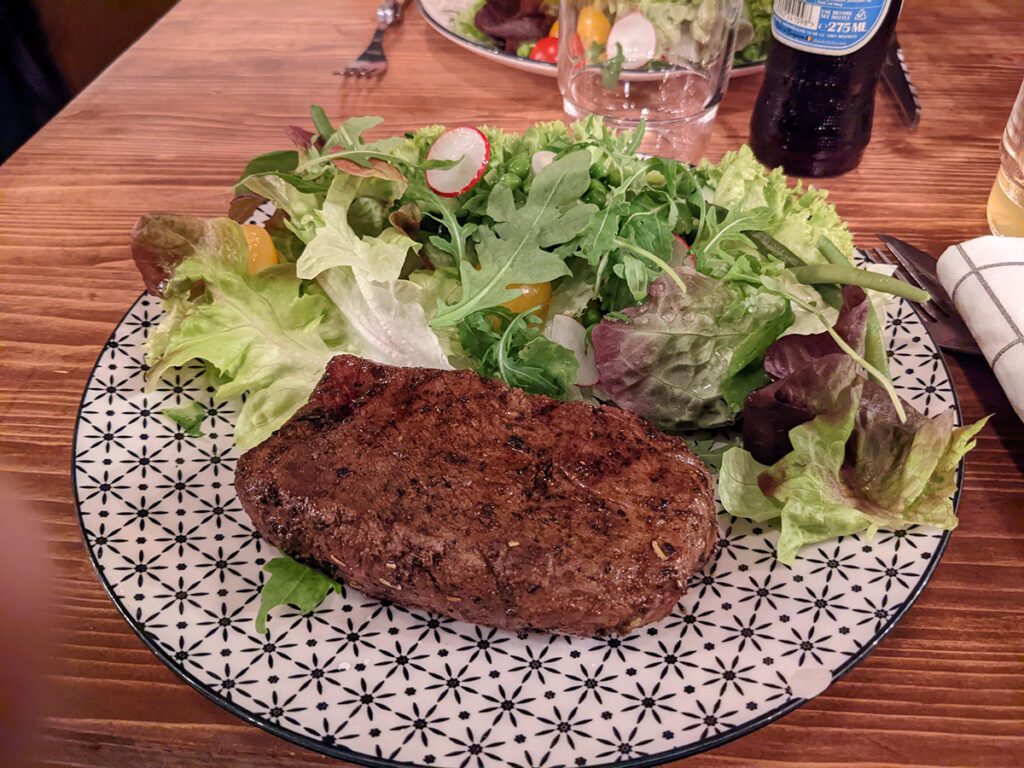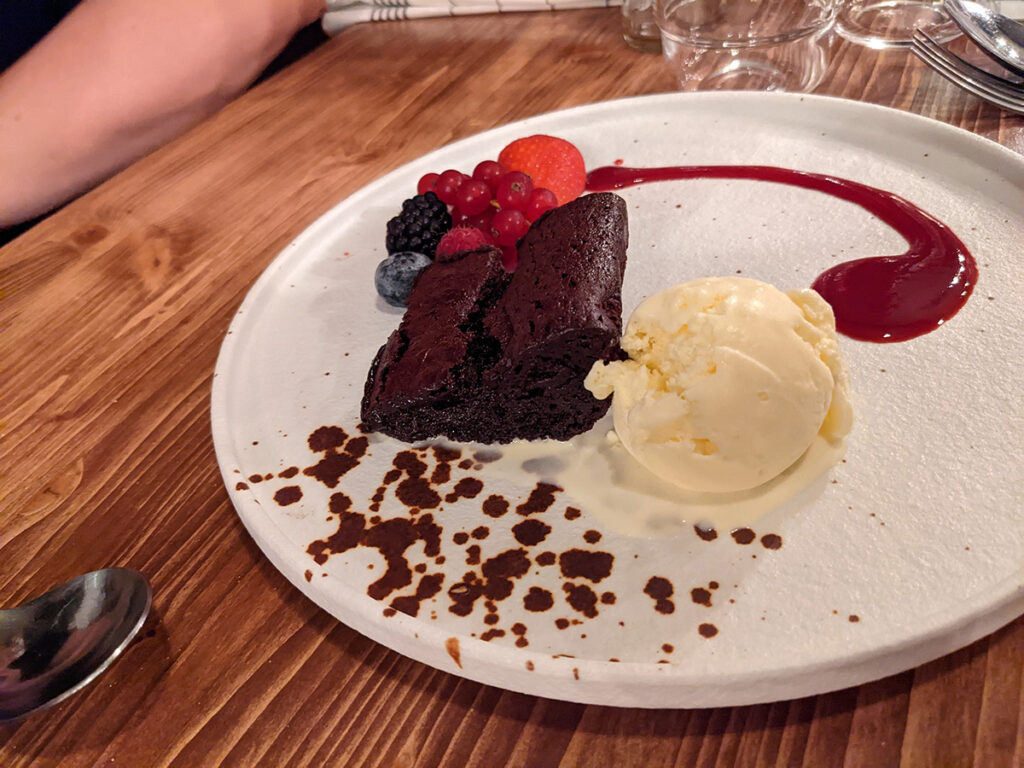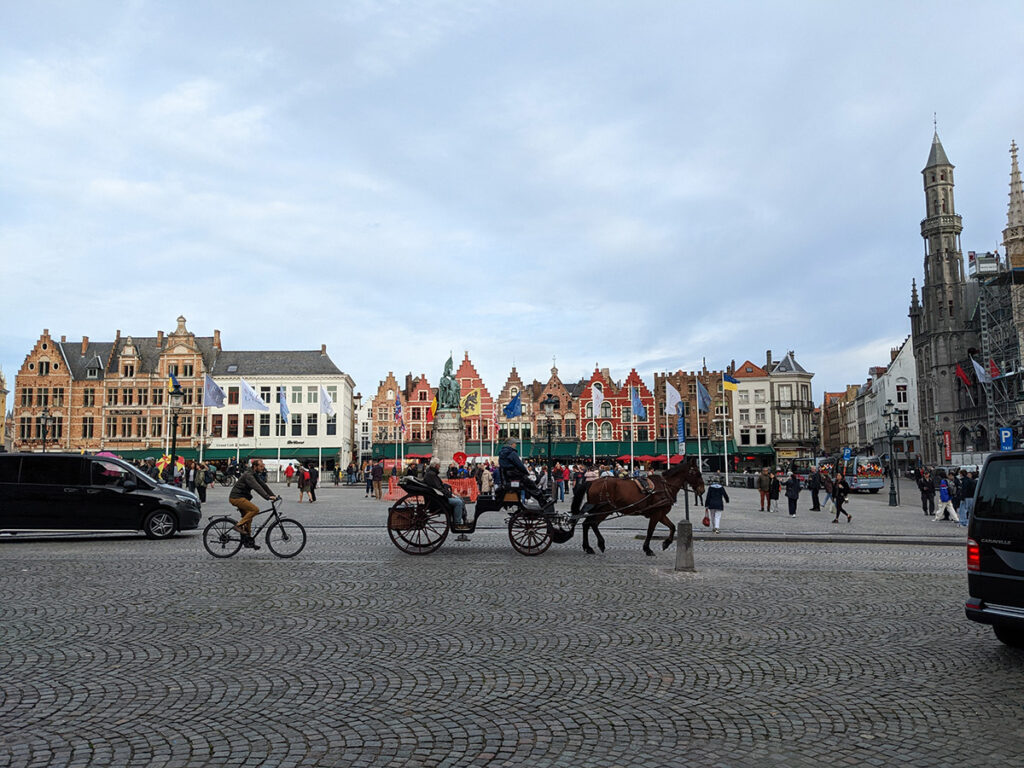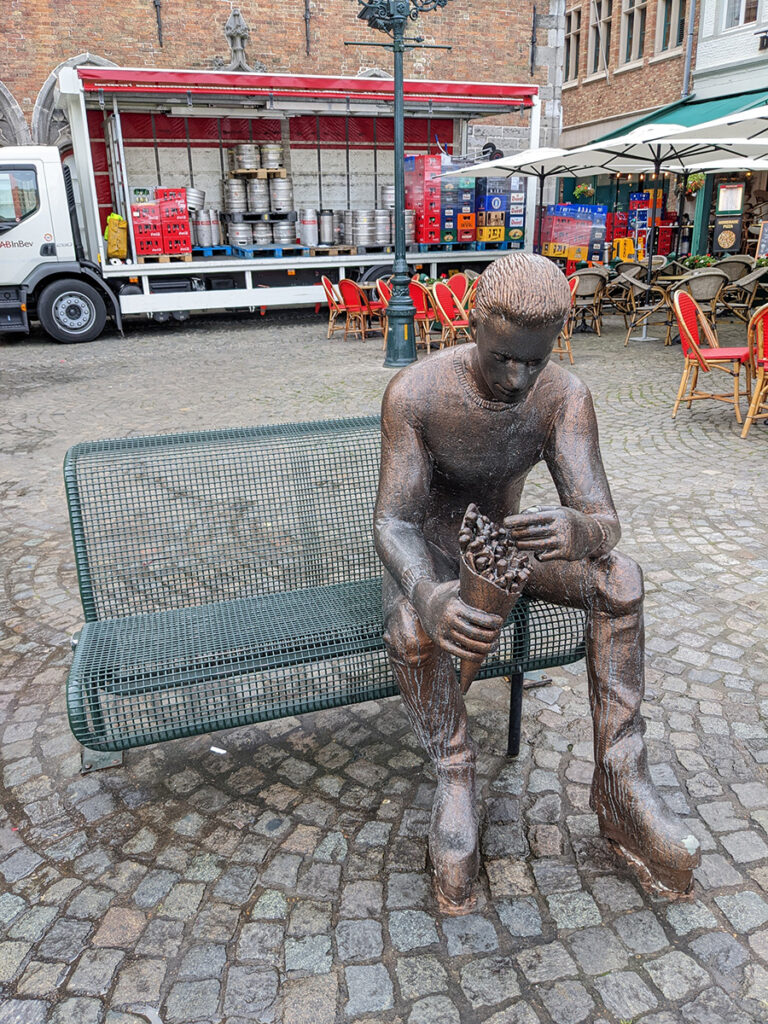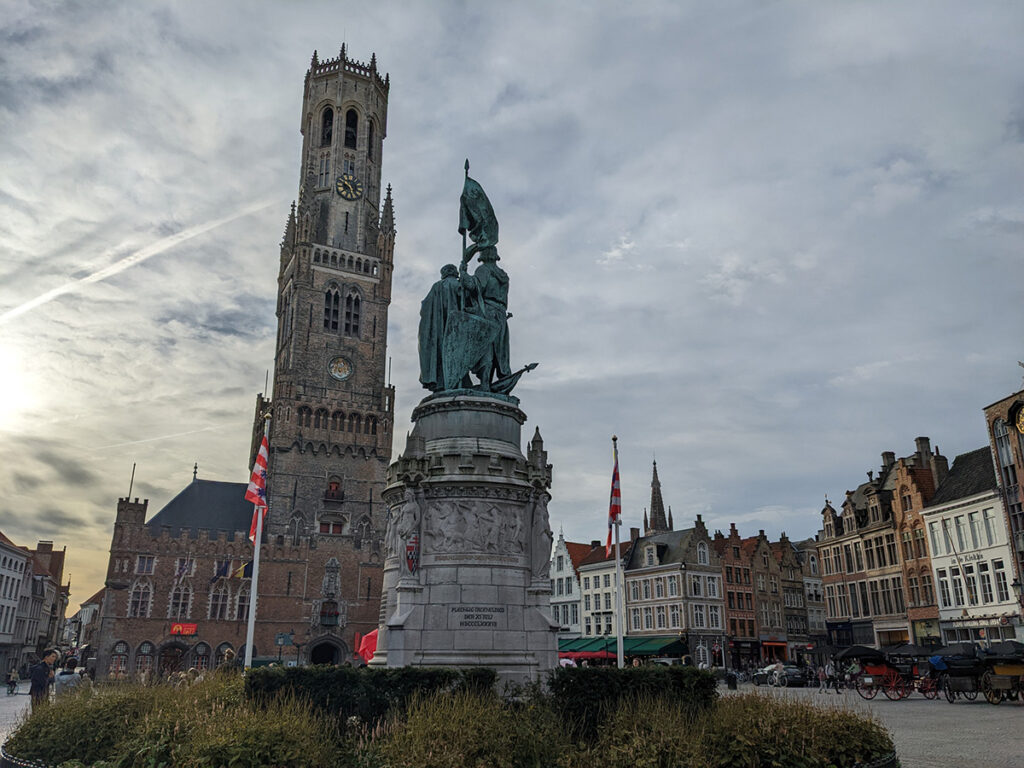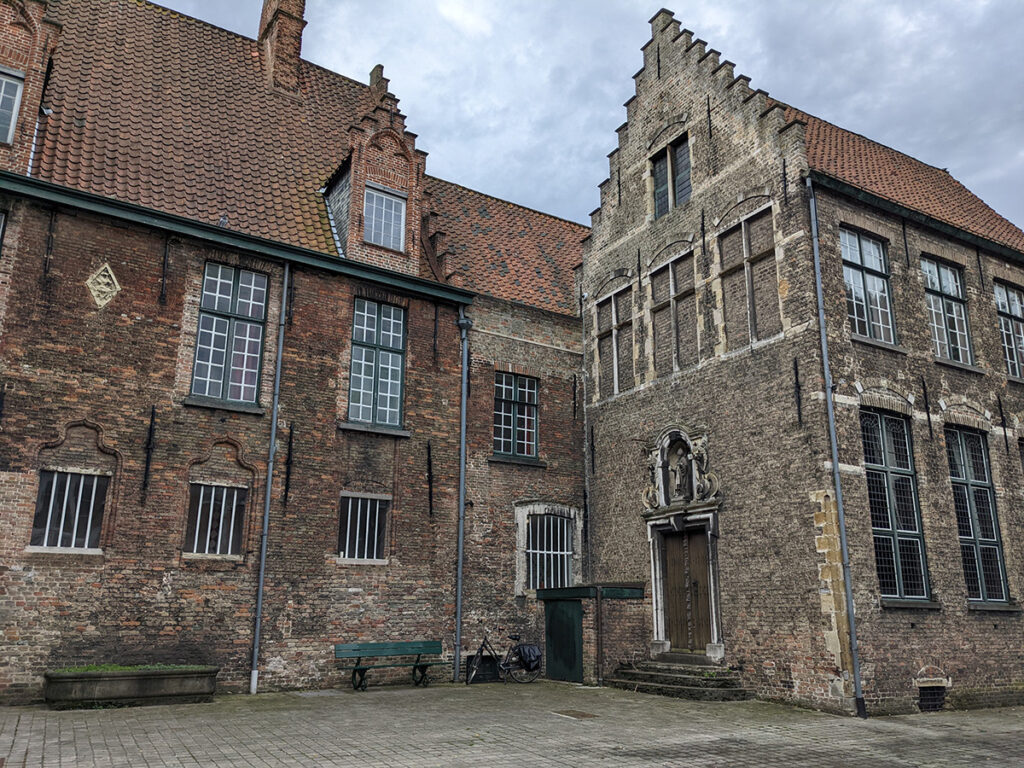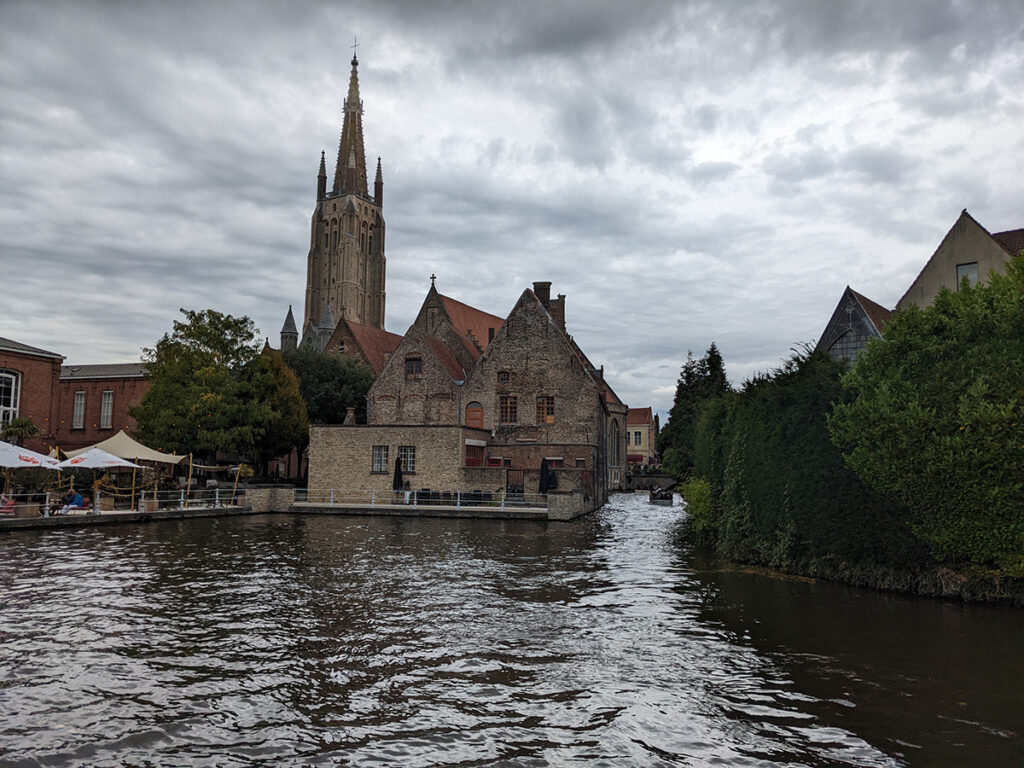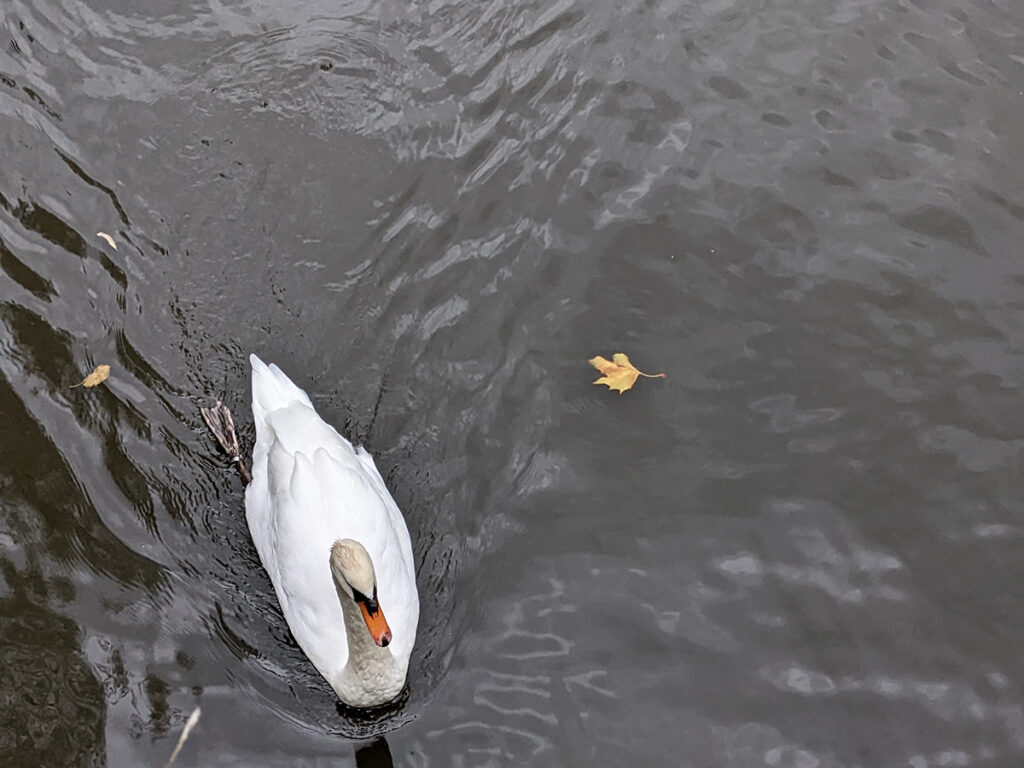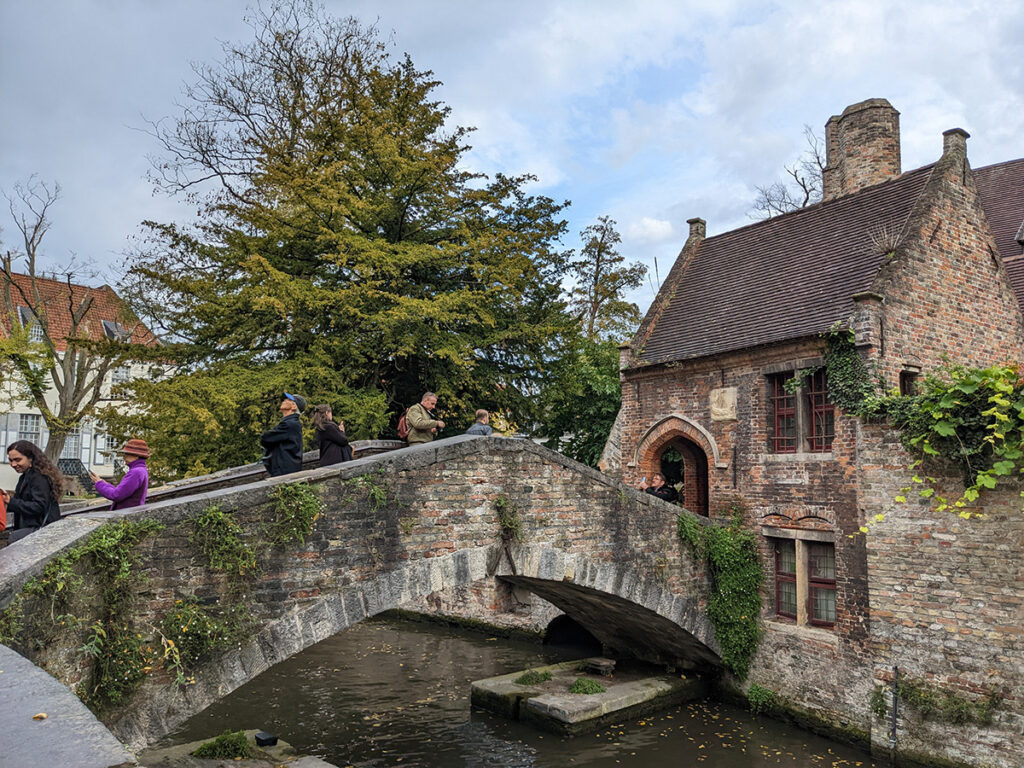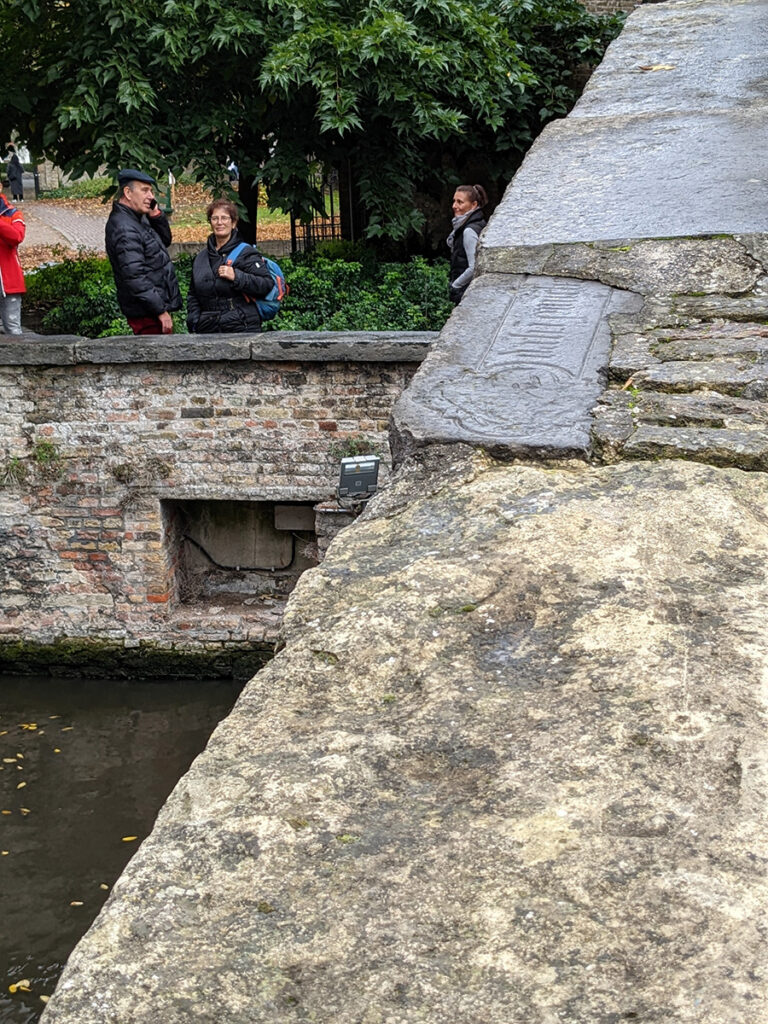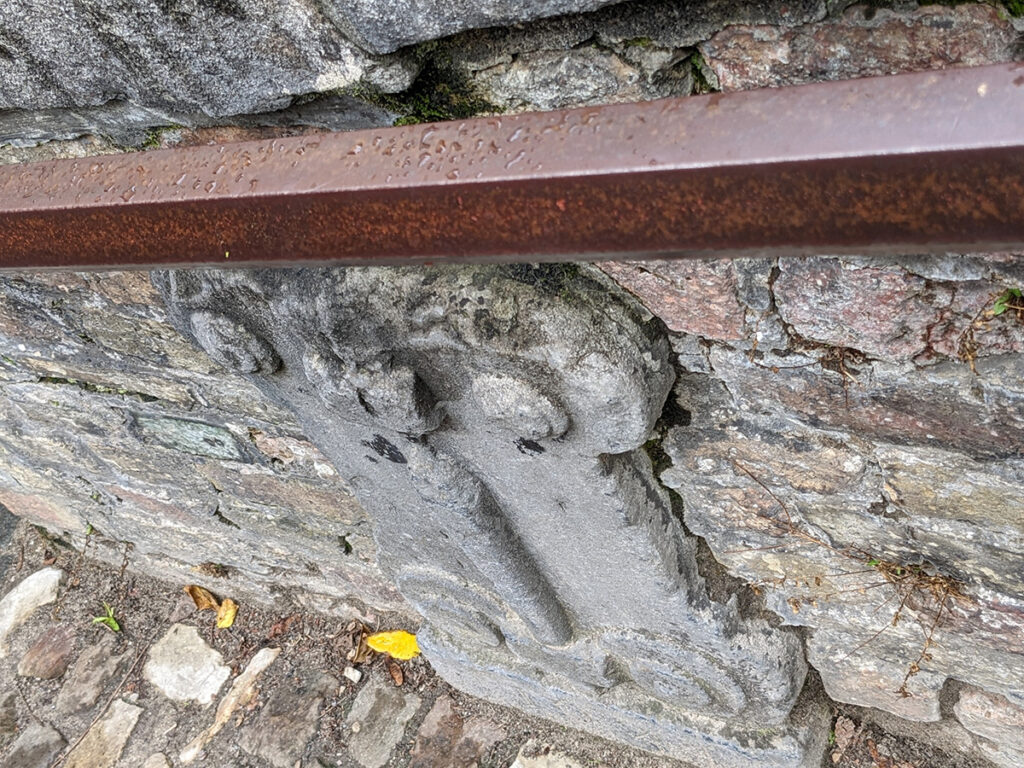This small, medieval town in the westernmost province of Flanders leaves an outsized impression. Just twenty thousand residents live in the city center, with another hundred thousand in the surrounding areas, yet 8.3 million tourists visited in 2019. Fortunately, whether due to visiting in the shoulder season or as some continuing effect of the pandemic, it wasn’t overcrowded.
After arriving by train, it was worth taking the bus into town to avoid more than twenty minutes walking with bags. Bruges is so immediately stunning that it was difficult not to stop every few yards to take another photo on the short walk from the bus stop to the Crowne Plaza in Burg Square. That continued for the rest of the ~24-hour visit, every memorable bit of which was wonderful.
During a walking tour the next day, there was plenty of historical information about the city. To summarize, Bruges was once one of the largest and wealthiest cities in Europe, functioning as a trade center for goods that they had a state-sanctioned monopoly on. Disputes with new territorial leadership that sought to profit from heavy taxes led to a stripping of the monopolies that made the city so prosperous. Trade moved to the east and to the north, and in the dismal period that followed, the city became known as Bruges-la-Morte (Bruge the dead). In modern times, the city has again risen in prominence through tourism.
Anyone who’s visited or heard about Rome’s tourist center will understand that “a gelato shop on every corner” is sometimes an understatement. Bruges is like that, only with waffles and chocolate. Around 70% of their economy is tourism, and that’s reflected in the storefronts. It’s a magical place that stirred emotion like no other on this month-long journey, but the main activities really center around consumption. A day was enough. A second may have just been spent sampling an unhealthy number of chocolate shops.
The overarching message is that if someone only had one day to spend in Belgium as a tourist, Bruges would be the place to do it. Nowhere else transports visitors back in time the same way, nor is anywhere else so well-catered to tourists.
